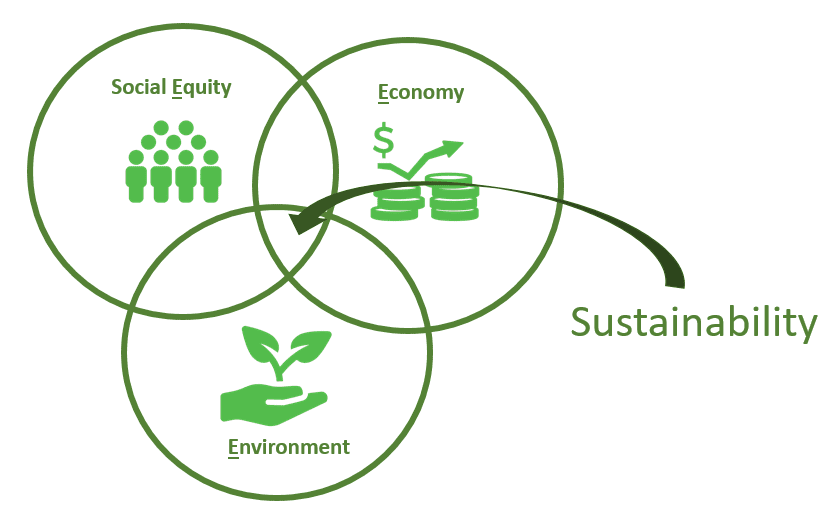Today, sustainability is a central topic in many discussions, especially when it comes to product consumption. The environmental impact of consumer choices has sparked a growing wave of awareness, influencing behaviors and, consequently, businesses that seek to align themselves with these new demands. When comparing digital and physical products, sustainability becomes a matter of debate, considering different aspects of their environmental impacts. In this post, we will explore how sustainability applies to each category and how your store can help promote more responsible consumption.

Sustainability of Physical Products
Physical products are undoubtedly the most visible when it comes to environmental impacts. From the extraction of raw materials to manufacturing, packaging, transportation, and disposal, each stage of a physical product’s life cycle involves processes that can generate carbon emissions, consume natural resources, and produce waste.
Production and Raw Material Extraction
The creation of a physical product begins with the extraction of natural resources, which can have devastating effects on the environment. For example, mining precious metals and cutting down trees for wood requires large amounts of energy and generates pollution. Moreover, transporting these materials to factories also contributes to greenhouse gas emissions.
Packaging and Transportation
Once the product is manufactured, it needs to be packaged. Packaging can be made from plastics, cardboard, or other materials that, when disposed of improperly, increase landfill waste. Transporting the products to consumers also contributes to carbon footprints as it involves the use of fossil-fueled vehicles.
Disposal and Recycling
Finally, after use, many physical products end up being discarded, resulting in more waste. While some items can be recycled, many do not have a proper disposal route or are simply non-recyclable. This contributes to the burden on landfills and pollution of ecosystems.
Sustainability of Digital Products
On the other hand, digital products seem like a more environmentally friendly alternative at first glance, as they do not involve physical raw materials and do not generate tangible waste. However, the environmental impact of digital products is far from zero.
Digital Infrastructure and Energy Consumption
Although there are no physical products, the infrastructure required to support digital products (such as data servers, networks, and user devices) requires enormous amounts of energy. Data centers, which store and process data, consume electricity, and most of the energy sources still come from fossil fuels, contributing to greenhouse gas emissions. Furthermore, the increasing consumption of streaming services, online gaming, and cloud storage intensifies the demand for energy.

Manufacturing of Electronic Devices
Devices needed to access digital products, such as smartphones, computers, and tablets, have a significant environmental footprint. Manufacturing these devices involves the extraction of materials like lithium, cobalt, and other rare metals, the mining of which is harmful to the environment. Additionally, planned obsolescence and improper disposal of these devices contribute to the production of electronic waste, one of the fastest-growing waste types globally.
Packaging and Disposal of Devices
Although digital products themselves do not involve packaging, devices to access them often come with plastic and other materials that can be difficult to recycle. And as mentioned earlier, the disposal of electronic devices contributes to the growing problem of electronic waste.
Consumer Awareness
In recent years, consumers have become more aware of the environmental impact of their choices. A Nielsen survey revealed that 66% of global consumers are willing to pay more for sustainable products and brands. This movement is influencing consumption habits, including a preference for eco-friendly products, waste reduction, and the choice of digital alternatives with a lower environmental impact.
Among consumers’ main concerns are the provenance of materials, the energy efficiency of devices, and companies’ transparency regarding their production processes. Moreover, the issue of proper product disposal has also become an important topic for many people, who are seeking solutions to reduce waste.
How Your Store Can Promote Responsible Consumption
As a business owner, you can take various steps to promote more responsible consumption while encouraging your customers to make more sustainable choices. Here are some actions your store can implement:
- Choose Eco-Friendly Products
When offering physical products, ensure they are made sustainably, using recyclable or biodegradable materials, for instance. For digital products, you can highlight those that offer alternatives minimizing environmental impact, such as apps that help manage waste or services that offset carbon emissions. - Sustainable Packaging
One of the most effective ways to reduce environmental impact is by cutting down on packaging. If possible, use recycled or biodegradable packaging and encourage customers to recycle or reuse their packaging. - Consumer Education
Educating consumers about the importance of sustainable choices can have a positive impact. Include information on your website, social media, and product packaging about how items are made, their environmental impacts, and how consumers can contribute to reducing these impacts. - Recycling and Reuse Programs
If your store sells digital products that rely on physical devices, offer incentives for returning used devices or collaborate with electronics recycling programs. This could include offering discounts for trading in old devices or donating products to social causes. - Adopt Renewable Energy
If your store is physical, consider switching to renewable energy sources to reduce your carbon footprint. For online stores, you can support servers that use clean energy. - Offer Digital Alternatives
For products that can be offered digitally, such as e-books, online courses, or software, consider promoting these alternatives. This helps reduce the use of physical resources and minimizes paper waste and other materials.
Sustainability is a growing concern for both physical and digital products, with both types of consumption having significant environmental impacts. However, the rising interest in conscious consumerism offers an opportunity for your store to stand out by promoting sustainable practices and products. By adopting mindful actions in manufacturing, packaging, energy consumption, and disposal, your store can not only reduce its environmental impact but also inspire customers to make responsible and conscious choices for the planet’s future.

The world is changing, and so are consumer behaviors. Being a store that embraces sustainability is an investment both for the environment and your business. Awareness is here to stay, and companies that adopt sustainable practices will be better positioned to meet the needs of an increasingly demanding market.





